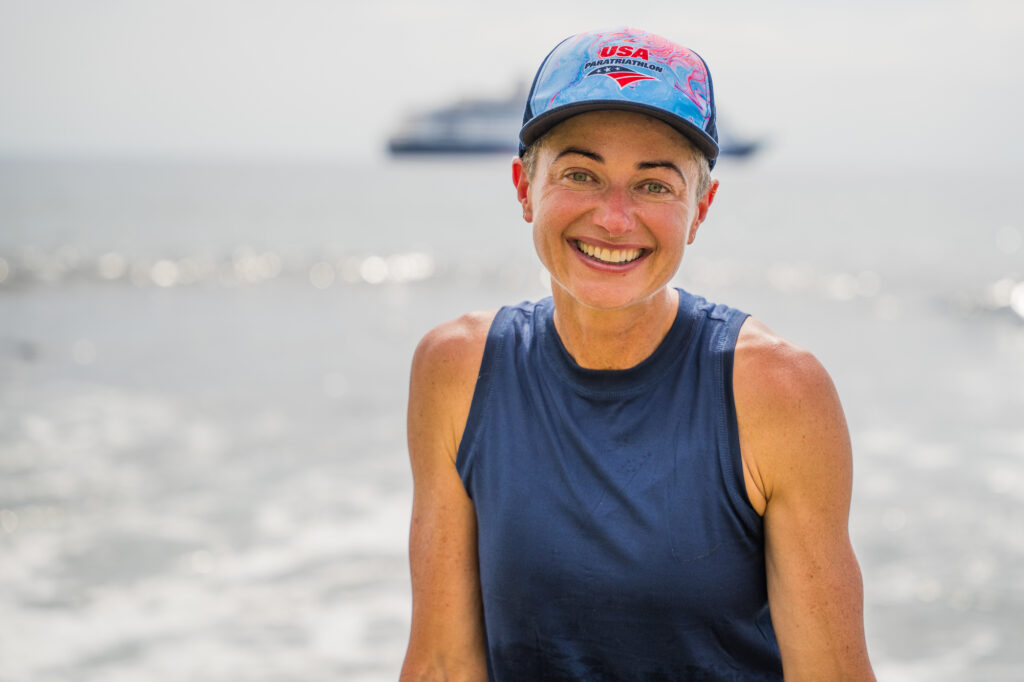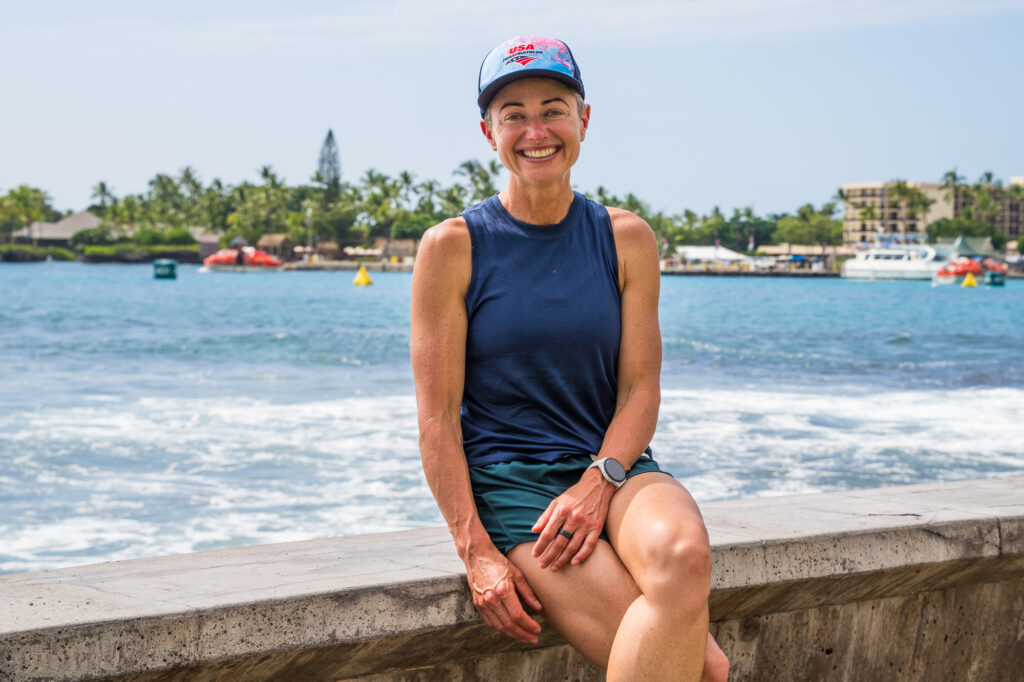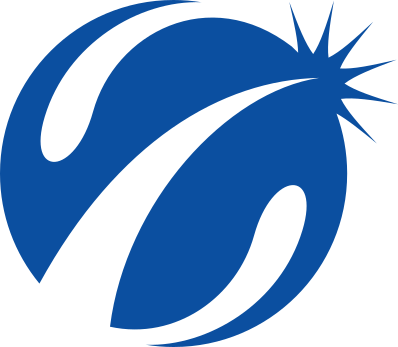USA Triathlon’s CEO, Victoria Brumfield, Looks To Realize a Dream in Kona

Victoria Brumfield. Photos: Kevin Mackinnon
The first time I met Victoria Brumfield was at the one-and-done IRONMAN New York race in 2012. At the time Brumfield was the Executive Director of Korff Enterprises, the company that put on events like the New York City Triathlon and, that year, the full-distance race in New York that must have been a logistical nightmare. I got to watch Brumfield in action as she ran the pro meeting. At one point she blew through the directions on how the athletes could get to the ferry to get to the race start, and I laughed as I looked at all the pros faces as they tried to keep track of the 10 different streets and intersections she had described in roughly 15 seconds.
It was my first introduction to the positive energy that Brumfield exudes, which is why I was hardly surprised to see her named as USA Triathlon’s CEO a few years ago.
Tomorrow Brumfield will be taking on the IRONMAN World Championship in Kona for the first time, and I was keen to catch up with her to find out what motivated her to be here this weekend.
“Every time I tell someone I’m doing Kona I immediately jump in and say ‘I didn’t qualify – I’m doing it through the foundation,'” Brumfield laughs almost as soon as I turn on the recorder. “I feel this need to let everybody know I don’t deserve to be there.”
Brumfield is participating here in Kona as part of the IRONMAN Foundation’s ambassador program – all told the 30 women participating in the program will raise over $400,000, which will be put back into the community.
“Obviously, I also fundraise for USA Triathlon Foundation, but in this in this instance it’s for the IRONMAN Foundation,” she says. “I personally made a donation as well to them and, for me, it’s an immediate group of women that you’re connected to, and there’s an incredible community of support around it. I didn’t just fundraise my way as an individual. I’m doing it as a part of a group that’s super connected.”
For Brumfield, being here in Kona is a “full-circle” experience.
“(Racing here) is going to mean something really special,” she says. “I think what makes it special is this is the race that first introduced me to triathlon. Watching it on TV in high school and just wishing I was that kind of person. I just remember laying in bed thinking ‘I wish I was the kind of person who could do that. Who could wake up at 4 a.m.’ And now, I wish I was the kind of person who didn’t have to wake up at 4 a.m. I don’t know how that happened, but I think that it feels full circle, realizing something in myself that as a kid I didn’t think was possible.”
“I think the other thing is just personally, I’ve worked really, really hard to train for this,” she continues. “I’ve trained more intentionally for this than I have any other race … I don’t know if it’s wanting to feel like I belong, but it’s wanting to respect the best women in the world … and to what the race represents by not showing up and being flippant about it. But respecting them and also respecting the course and the elements.”
Competing here in Kona also has a special meaning because next year’s world championship returns to seeing both men and women competing on the same day here in Kona.
“For me it’s just been this evolution of ‘I’ve done IRONMAN and I’ve done a ton of racing and I love it, but this always just felt so unattainable,'” she says. “If there’s ever a year that I want to realize this dream, it’s the year that it’s all women. I love racing with women. All my first races – my first marathon, my first 10K, my first triathlon – were all women’s-only races. It’s funny because, looking back, I didn’t intentionally choose women’s only races … I think there’s just something different about the energy and the camaraderie.”

So has it been hard to balance training for the world championship while also heading up USA Triathlon?
“I’m a shell of a human,” she laughs. “It’s so hard. I’ve done full-distance races before, but I haven’t trained this with this much focus,. So when I first started training, it was just incrementally more and I thought ‘it’s not that bad.’ But the last six weeks of training, I mean, I was ramping up to 18 to 25 hours of training, with a couple of down weeks, on top of a very intense job that’s 50-plus hours a week, and travel. I think I probably didn’t show up as my best self at work every day because I was just drained all the time, especially once I started adding in sauna training.”
So what has she learned from the experience of training for the race on the Big Island tomorrow?
“Oh my God, I’m so good at eating,” she laughs. “Like a machine. What have I learned? Before I did my first full IRONMAN, I did Unbound Gravel, the 200-mile ride. It was the longest thing I’ve ever done. And a bunch of things went wrong, and it took me 18 hours. I just remember my first IRONMAN thinking ‘I’m going to finish this thing five hours faster than that bike race. I can do anything.’ I think what it made me realize is that no matter how good you feel, it’s not going to last. So, don’t overcook it. And, no matter how bad you feel, just keep moving. Cause it’s going to pass. It’s amazing, barring injury, what your body
can keep doing if you just keep moving. I feel like that’s translated into knowing that I actually can go slow for a long time.
As a high-profile person in the sport, I wonder if there’s something Brumfield hopes her participation in the race can do to help with the development of triathlon.
“Here’s what I care about in the sport: we want more women racing,” she says. “So, I think women recognizing that it’s not selfish, that they can participate in the sport and it’s for them. That’s number one. It doesn’t have to be this distance, but there’s always something to aspire to in the sport … Aspiring to something in the sport can mean doing two races a year, or going faster, or doing it with grace and dignity, or whatever it is. There’s always something to aspire to in a way that taps into potential and capacity that you never would have tapped into had you not challenged yourself in this sport. There’s something about it (triathlon). I love biking. I love running. Swimming’s okay. But there’s something different about this sport that you just can’t really access through just biking and running that triathlon helps you access. It’s the amount of commitment and determination and positivity that you have to maintain to overcome challenges, because there’s so many more variables and factors. And it doesn’t matter if you’re doing a sprint race or an IRONMAN. The sport has so many complexities to it, which creates barriers. That’s the tough part, but that’s also what makes you stronger and helps you realize more about yourself in a way that you can’t through just running or biking, in my experience.”
Does Brumfield see a connection between USA Triathlon’s goal of increasing participation and increasing the number of short-course races in the country and IRONMAN racing? For sure. She recalls the time in the sport when triathlon was about to become part of the Olympics.
“Short course racing is what it was all about,” she remembers. “The Bud Light series, and all the races that were televised that had big pro races were short course events. New York, LA, Chicago and St. Anthony’s – these were iconic short course races that people traveled around the country to go to. All my racing I did in the early 2000s was traveling to LA and Malibu and Chicago. Those were the races that
everybody knew about and they were televised and race directors were investing in television and
they were getting big non-endemic partners. It was a different time in the sport. I think we
can’t underestimate the value that IRONMAN brings. The fact that they’re investing in television
and pros and all of these things that give us the visibility that our sport needs. The challenge of that visibility is that it doesn’t come across as the most accessible of sports … There’s this perception that you have to be this extraordinary human as opposed to an ordinary human who can do extraordinary things. And the reality is that most of the extraordinary things we do start incrementally. So, we know that the vast majority of people who participate in triathlon are doing short course racing and that’s where we’re seeing the most growth in participation especially in female participation.”
For now, though, short course racing and getting more people to compete in the sport she loves needs to be put on hold for a bit. Victoria Brumfield has an IRONMAN to finish.
Tags:
IRONMAN World Championshipironman world championship 2025IRONMAN World Championship KonaKona 2025USA TriathlonVictoria BrumfieldContinue the discussion at forum.slowtwitch.com
1 more reply




Good for her. It’s cool to see her do this.
All that said, while I’m happy to see her push for more women in the sport, it seems like both she and Ironman are making this a priority.
What metrics defines success? I sure hope at the end of her tenure there is some serious growth in new women racing triathlon, not just a little movement of the needle.
I am still wondering what happened to what was the Danskin Series,later bought by Ironman and rebranded Iron Girl? That womens only series was huge but very,very few of the womens advocates around now ever mention it let alone explain why it went bust.
Paraphrasing:
I trained 18-25 hours a week in the run up to this; struggled at work at times, was so exhausted
I’m doing this so that more women do triathlons
Oh…
Thanks for sharing this article. I think as USAT CEO she will also emerge with a greater appreciation for how many members she gets not because they are pulled in by all the USAT races, but because they are pulled in by Ironman race and Ironman races only.
Here in Canada, it almost feels like Triathlon Canada ignores the entire Ironman part of the market, while Ironman racing is likely a super large contributor to adding participants and adding members.
In any case, she will emerge with a good feel for how important Ironman is in the ecosystem by racing in Kona. It beats trying to figure that out from the executive office.
It’s an interesting thing and Im not 100% sure how I feel about it. part of me is like.. GOOD for her and the other part is why is the CEO racing so much when USAT is such a crap shoot at the moment.
she’s modest, she finished with a 14.35 in the 45-49 AG which while is a solid result gaining 209th/237 finishers. Wonderful to see the executives in the sport also showing up and racing; not sure how many people are inspired hearing 18-25 hours of training on top of a full time job, maybe the optics of how we explain the sport we love needs a bit of massaging….LOL
My thinking is more along the lines of:
The message here is hey look at me fellow women - I do nothing but work and train (insane hours), triathlon is fun, come join me (if you have no other life)
I don’t know if that would be how I’d promote the sport to increase participation (particularly female).
I am glad that she didn’t pivot into what we as a society need to do so more women can pursue long distance triathlon. Not that such an outcome wouldn’t be nice, but it’s a virtually impossible objective to some how assume Kona policy or participation would affect women broadly in society, and then once that butterfly effect happens, somehow it will come back around to those women choose to spend that time in long distance triathlon.
She raced the last female only race in Kona, donated in the process of doing so, and I commend her for that!
I think it’s good for her to see what long distance triathlon is about, and it’s good for her to be able to say, “ya, I’ve raced Kona, I don’t think it’s for everyone, let’s focus on shorter distances…”
But the 18+ hour training weeks kinda wild, but I assume that includes all kinds of stuff like core work, sauna, etc and she’s wasn’t doing 10+ hours on the bike every week on top of everything else. She does look very fit though!
Reading their latest form 990 certainly makes me think more of your latter thought.
Indeed - go back 10 years when Lionel was actually winning and placing in the big IM races, and was a HUGE story within the sport of triathlon - it’s like he did not even exist in the world of Triathlon Canada. I got tired, and eventually gave up advocating for the fact that, IT”S ALL TRIATHLON with the Communications Folks at TriCan!
I will say this also in her defense. She can be spending her salary out racing, or buying houses or trips to Europe with her vacations. It’s easy to criticize that aspect of her behavior because we can so clearly see it. Of course, I can also be perhaps too critical of her and I’ve expressed other concerns in the past with at least how it seems she handles her approach to men, her largest customer group.
Im just trying to give her the benefit of the doubt. Personally I like vic and I want nothing more then for her to get USAT back in order. When we talk I think she has a lot of history in the sport that gives her an upper hand at what her job is. I just dont know if I agree with everything she is doing and Im really confused by this one. But then again lots of people disagree with what I choose to do here as well so we both have that in common
I’m kind of curious on that thought. Is there more behind her racing this race than, “I want to do the thing everyone asks me if I’ve ever done before.”?
Or do you mean her (likely hypebole) of how much she trained?
I didn’t see much in her racing this other than she’s buying the last ticket to the all girls show doing what she figured she’d “ought” to do at some point anyway.
Historically the USAT CEO has been active as a triathlete. Rocky Harris raced several times per year, but all in Colorado as far as I know and all Olympic Distance Non-Draft.
USAT was crushing it under his leadership.